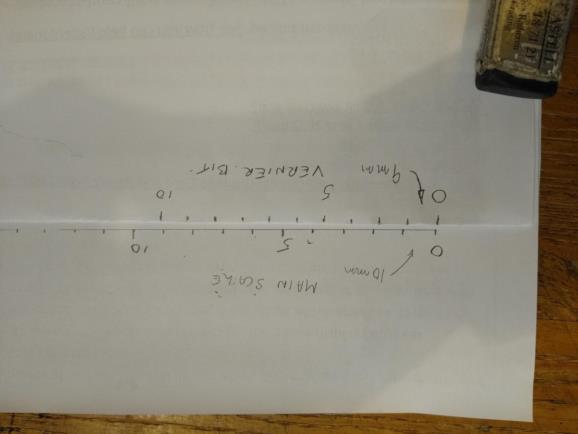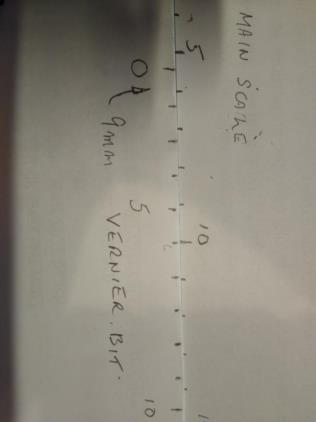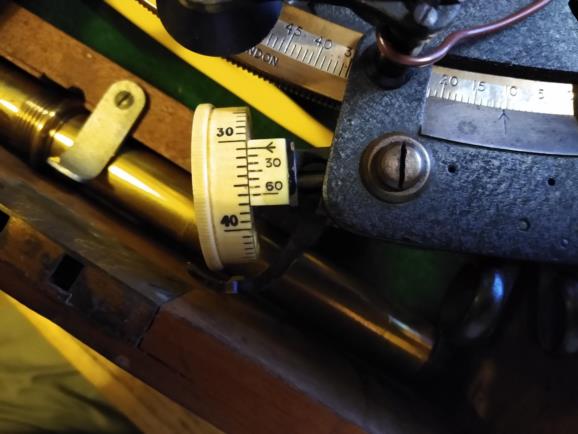
NavList:
A Community Devoted to the Preservation and Practice of Celestial Navigation and Other Methods of Traditional Wayfinding
From: David Pike
Date: 2022 Jun 22, 15:29 -0700
The Vernier Scale is a cunning French trick to confuse les Anglais. They cheat. When working in their decimal system. They give you short measure and manage to squeeze ten divisions on the Vernier bit into nine divisions on the main scale. The best way to understand their little trick it is to make your own. Take a sheet of paper; draw a line, and mark divisions along it 10mm apart. Mark the divisions from 0 upwards. Then take another piece of paper, fold it, and mark a new set of divisions along the fold, but this time make the divisions only 9mm apart as per the photograph.
Now line the two scales up so that both 0s are in line. Only the 0 and 10 lines on the Vernier scale will be in line with a division on the main scale. Next move 0 on the Vernier about 1/10 of a main scale division to the right. Low and behold only 1 on the Vernier will be in line with a main scale division. You’ve measured 0.1 in the main scale. Got it? Try again. Move the Vernier more to the right to 3/5ths of the way between 5 and 6 on the main scale. Guess what? Yes, now only 6 on the Vernier is lined up with a division on the main scale. You’ve measured 5.6 on the main scale. You don’t have to work in decimal. My Hughes Mates sextant fits 6 x ten seconds of arc divisions into the space of five minutes on the drum and is thus able to measure angles to the nearest 10 seconds of arc (See photo). Once you’ve got the basic idea, you can divide the Vernier bit to suit yourself to get the units or degree of accuracy you’re looking for.
Tell me and I forget, Show me and I remember, let me try it myself and I understand. DaveP










